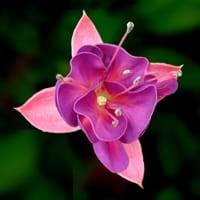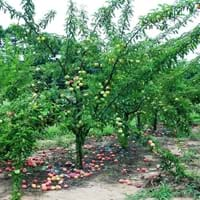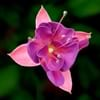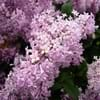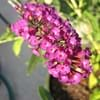Life Span
Perennial
Perennial
Type
Tender Perennial
Fruit
Origin
Caribbean
Not Available
Types
Fuchsia Decidua, Fuchsia Fulgens, Fuchsia Splendens, Fuchsia Microphylla
European plum, Gages, Japanese plum
Habitat
Forest edges, Woods
Moist Soils, Sandy areas, Wet ground
USDA Hardiness Zone
9-10
5-8
Sunset Zone
16, 17, 23, 24
2a, 2b, 3a, 3b, 4, 5, 6, 7, 8, 9, 10, 11, 12, 14, 15, 16, 17, 18, 19, 20, 21, 22
Habit
Arching/Fountain-shaped
Upright/Erect
Flower Color
Orange Red
Pink, White
Flower Color Modifier
Not Available
Bicolor
Fruit Color
Not Available
Purple, Violet, Yellow, Red, Green, Purple, Burgundy, Bronze, Ivory
Leaf Color in Spring
Purple, Dark Green
Pink
Leaf Color in Summer
Purple, Dark Green
Not Available
Leaf Color in Fall
Purple, Dark Green
Not Available
Leaf Color in Winter
Unknown
Light Green
Leaf Shape
Long Linear
Oval
Plant Season
Spring, Summer, Fall, Winter
Early Spring, Late Winter
Sunlight
Full Sun, Partial Sun, Partial shade
Full Sun
Type of Soil
Clay, Loam, Sand
Clay, Sandy
The pH of Soil
Acidic, Neutral
Acidic
Soil Drainage
Average
Well drained
Bloom Time
Indeterminate
Early Spring
Tolerances
Drought
Drought
Where to Plant?
Container, Ground, Pot
Ground
How to Plant?
Seedlings, Stem Planting, Transplanting
Grafting
Plant Maintenance
Medium
Low
Watering Requirements
Requires regular watering
Average Water Needs, Requires regular watering, Water daily during growing season, Water Deeply
In Summer
Lots of watering
Moderate
In Spring
Moderate
Moderate
In Winter
Average Water
Average Water
Soil pH
Acidic, Neutral
Acidic, Neutral, Alkaline
Soil Type
Clay, Loam, Sand
Clay, Loam, Sand
Soil Drainage Capacity
Average
Well drained
Sun Exposure
Full Sun, Partial Sun, Partial shade
Full Sun, Partial Sun
Pruning
Prune in spring, Prune lower leaves, Remove dead or diseased plant parts, Remove deadheads, Remove shoots
Remove damaged leaves, Remove dead branches, Remove dead leaves
Fertilizers
All-Purpose Liquid Fertilizer
Nitrogen, Phosphorous
Pests and Diseases
Rhizoctonia Root Rot, Rust
Red blotch
Plant Tolerance
Drought
Drought
Flower Petal Number
Single
Not Available
Foliage Texture
Medium
Not Available
Foliage Sheen
Matte
Not Available
Attracts
Hummingbirds
Ants, Aphids, Beetles, Mites
Allergy
Asthma, Hay fever
Abdominal pain, Anaphylaxis, breathing problems, Hives, Swelling, Throat itching, Vomiting
Aesthetic Uses
Showy Purposes
Used for decorating walls, fences, gates, hedges, etc.
Beauty Benefits
Not Available
Improve skin tone, Skin Problems
Environmental Uses
Air purification
Air purification, Shadow Tree
Medicinal Uses
Not Available
Bone strength, Brain disease, Cancer, Cellular Health, constipation, Diabetes, Digestion problems, Heart problems
Part of Plant Used
Flowers, Fruits
Fruits
Other Uses
Not Available
Cosmetics
Used As Indoor Plant
Yes
No
Used As Outdoor Plant
Yes
Yes
Garden Design
Bedding Plant, Container, Feature Plant, Foundation, Hedges, Tropical
Edible, Fruit / Fruit Tree
Botanical Name
FUCHSIA triphylla
PRUNUS domestica 'Brooks'
In German
Fuchsie
Pflaume
In Spanish
Fucsia
ciruela
In Greek
φουξία
Δαμάσκηνο
In Portuguese
Fúcsia
ameixa
Phylum
Magnoliophyta
Vascular plant
Class
Dicotyledonae
Magnoliopsida
Family
Onagraceae
Rosaceae
Clade
Angiosperms, Eudicots, Rosids
Angiosperms, Eudicots, Rosids
Tribe
Not Available
Not Available
Subfamily
Not Available
Amygdaloideae
Importance of Fuchsia and Plum
Want to have the most appropriate plant for your garden? You might want to know the importance of Fuchsia and Plum. Basically, these two plants vary in many aspects. Compare Fuchsia and Plum as they differ in many characteristics such as their life, care, benefits, facts, etc. Every gardener must at least have the slightest clue about the plants he wants to plant in his garden. Compare their benefits, which differ in many ways like facts and uses. The medicinal use of Fuchsia is Not Available whereas of Plum is Bone strength, Brain disease, Cancer, Cellular Health, constipation, Diabetes, Digestion problems and Heart problems. Fuchsia has beauty benefits as follows: Not Available while Plum has beauty benefits as follows: Not Available.
Compare Facts of Fuchsia vs Plum
How to choose the best garden plant for your garden depending upon its facts? Here garden plant comparison will help you to solve this query. Compare the facts of Fuchsia vs Plum and know which one to choose. As garden plants have benefits and other uses, allergy is also a major drawback of plants for some people. Allergic reactions of Fuchsia are Asthma and Hay fever whereas of Plum have Abdominal pain, Anaphylaxis, breathing problems, Hives, Swelling, Throat itching and Vomiting respectively. Having a fruit bearing plant in your garden can be a plus point of your garden. Fuchsia has no showy fruits and Plum has showy fruits. Also Fuchsia is flowering and Plum is flowering. You can compare Fuchsia and Plum facts and facts of other plants too.
